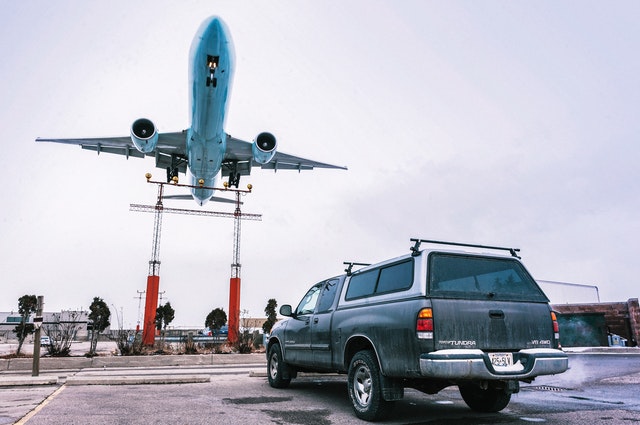- Our Firm
- Personal Injury
-
-
-
Personal Injury Lawyers
-
-
-
-
-
-
Injured in an accident? At Diamond & Diamond, our team of lawyers rely on their reputation in the field and extensive experience in personal injury to provide clients with a dedicated support system over the duration of their case.
-
-
-
-
-
HAVE YOU RECENTLY BEEN INJURED IN AN ACCIDENT?
-
-
-
- Corporate
- Class Action

Planning a Trip? Which Is Safer: Planes, Trains or Automobiles?
#AskHeikkiCoxKikkajoon
Travel options for most people usually come down to flying, taking a train or taking to the highway in the family car. Besides differences in cost and time, safety can be an important factor in deciding which mode of transportation to use. Making that decision can be difficult.
Planes are in the news all the time, right?
Plane crashes, particularly those involving commercial airlines, are given widespread media coverage. For example, the recent crash of a small, private plane on a highway in Southern California in which two people were injured was reported by Canadian media outlets.
Contrary to what people might believe from the coverage they get from the news outlets when one happens, plane crashes are not common occurrences. Airplane accidents average only one accident for every 3.1 million flights. In fact, improvements in plane design and technology should keep the accident rate declining in the coming years.
Air travel statistics in Canada appear to support the global trend toward diminishing accidents. Last year, there were only nine accidents involving aircrafts within Canadian airspace. Two people were killed and another two suffered injuries, so as safe as planes might be, the loss of human life and the seriousness of the injuries inflicted on those who survive should not be forgotten.
Trains are a surprisingly popular means of transportation
Trains do not offer the speed of planes or the convenience of automobiles, but many Canadians continue to rely upon them when they travel. According to information compiled by Railway Association of Canada, the nation’s trains carried almost 82 million passengers in 2015. Of that total, slightly more than 77 million were commuters using trains for getting to and from work or for other short trips, and another 4 million used trains to travel longer distances between cities.
Although the nation’s trains were involved in more than 1,200 accidents in 2015, the last year for which accident statistics are available, only about 4 percent of those accidents involved passenger trains. Railway accidents in which people are involved are defined under guidelines published by the Transportation Safety Board of Canada as the following:
- Death or serious injury of a person getting on or off a train or while on board
- Death or serious injury caused by coming into contact with any part of a train or its contents
Eight passengers suffered serious injuries in train accidents in 2015. There were no reported fatalities.
Reasons to leave the family automobile at home
The convenience and low cost of automobiles, relative to trains and planes, might make them the best choice when travelling if not for the issue of safety. Almost 162,000 people suffered injuries and another 1,858 died in 116,735 motor vehicle accidents in 2015 on Canadian roadways. Last year, the province of Ontario reported 50,032 automobile collisions in which 433 people died and another 49,599 were injured.
A 10-year study of fatalities occurring in train, plane and automobile accidents concluded that the best way to be safe while traveling was to leave the family car at home. The report compared deaths per one billion passenger miles for each form of transportation and came up with the following results:
- Automobiles:7.28 deaths
- Trains: 0.43 deaths
- Planes: 0.07 deaths
The only form of transportation that was deadlier than traveling by car was riding on a motorcycle. The death rate for motorcycle riders was 212.57 per one billion passenger miles.
Personal injury lawyers ready to help
No matter what form of transportation you use, accidents can happen. If you are injured in an accident, the personal injury lawyers at Diamond and Diamond have years of experience handling all types of personal injury cases. Their goal is to get you the compensation you need to get on with your life. Contact our 24/7 injury hotline at 1-800-567-HURT or visit our website to speak to someone now about your claim. Consultations are free, and we have offices located throughout Ontario.
Need a Lawyer?
We are here 24/7 to address your case. You can speak with a lawyer to request a consultation.
1-800-567-HURTGet started with a free consultation
OUR TEAM
- Yefim Belyavsky
- Osama Hashmi
- Nicole Sherman
- Quan Duong
- Sheffali Chaudhary
- Francesco Rotatore
- Samarth Bajaj
- Qasim Latif
- Jeffrey Stephan
- Cassandra Harvey
- Ishmeet Sandhu
- Nolan Bachmann
- Annamarie Demaj
- Jeffrey Hum
- Tofunmi Adeyeye
- Alessia De Gasperis
- Amandeep Chawla
- Jeremy Tsoi
- Kimiya Razin
- Shir Zisckind
- Gray Sinden
- Shelly Bard
- Christian Brown
- Daly Canie
- Tanveer Sohal
- Prianka Virdi
- Noah Brownstone
- Justin Kaminker
- Harinder S. Bhatti
- Craig Yargeau
- Kiran Birk
- Amit Singh
- Andrei Teju
- Maria Zahid
- Jacob Elyk
- Harry Gill
- Kristina Olivo
- Egi Bano
- Cam Woolley
- Charles Thompson
- Alexandra McCallum
- John Sime
- Allan Cocunato
- Patrick Poupore
- Erika Henderson
- Marina Korshunova
- Brandon Handelman
- Regeena Alapat
- Ryna Kim
- Isaac Zisckind
- Manpreet Bhogal
- Mathura Santhirasegaram
- Nikolai Singh
- Sandra Zisckind
- Jeremy Diamond
- Michael Blois
- Darryl Singer
- Nadia Condotta
- Tinashe Madzingo
- Veronica D’Angelo
- Corey J. Sax
- Scott Tottle
- Steven Wilder
- TJ Gogna
- Jillian Carrington
- Joshua Himel
- Simon Diamond
- Cory Rubin
- Simon Mariani
- Brandon Greenwood
- Basil Bansal
- Nastassia Ivanova
- Tania Fleming
- George Laloshi
- Patrycja Majchrowicz
- Diana Iakossavas
- Dior Africa
- Alex Ragozzino
- Liana Saccucci
- Richard J. Chang
Head Offices
Main Offices
Barrie
Main Office
168 Bayfield Street
Calgary
Main Office
1331 Macleod Trail SE, Suite 645
Edmonton
Head Office
4246 97 Street NW, Unit 103
Halifax
Consultation Office
1701 Hollis St
London
Main Office
256 Pall Mall St, Suite 102
Oshawa
Consultation Office
50 Richmond Street E, Unit # 108 B
Ottawa
Main Office
955 Green Valley Crescent, Unit 315
Sudbury
Main Office
31 Larch Street, Unit 300
Timmins
Main Office
120 Cedar Street South, Unit 002A
Toronto
Head Office
255 Consumers Road, 5th Floor
Vancouver
Head Office
1727 West Broadway, Suite 400
Windsor
Main Office
13158 Tecumseh Rd. E. Unit 3B
Additional Areas Served
Ontario
- Ajax
- Alberta
- Aurora
- Barrie
- Belleville
- Bowmanville
- Brampton
- Brantford
- Brockville
- Bracebridge
- Bradford
- Burlington
- Burnaby
- Calgary
- Chatham
- Cobourg
- Collingwood
- Cornwall
- Durham
- Edmonton
- Elliot Lake
- Etobicoke
- Georgetown
- Guelph
- Hamilton
- Huntsville
- Kanata
- Kelowna
- Kingston
- Kitchener
- Leamington
- London
- Markham
- Milton
- Mississauga
- Muskoka
- Niagara Falls
- Newcastle
- Newmarket
- North Bay
- North York
- Oakville
- Orangeville
- Orillia
- Oshawa
- Ottawa
- Owen Sound
- Parry Sound
- Perth
- Peterborough
- Pickering
- Prince Edward County
- Richmond
- Richmond Hill
- Sault Ste Marie
- Sarnia
- Scarborough
- St. Catharines
- St. Thomas
- Stouffville
- Sudbury
- Surrey
- Thunder Bay
- Timmins
- Toronto
- Uxbridge
- Vancouver
- Wallaceburg
- Waterloo
- Welland
- Whitby
- Windsor
- Woodstock













